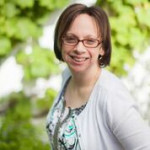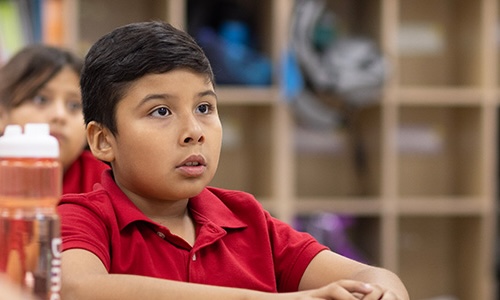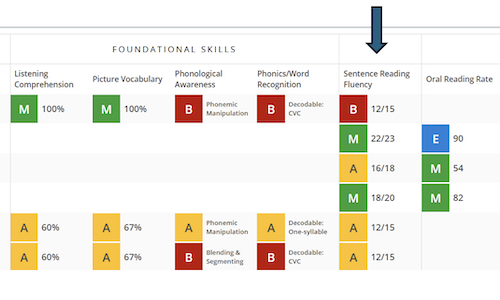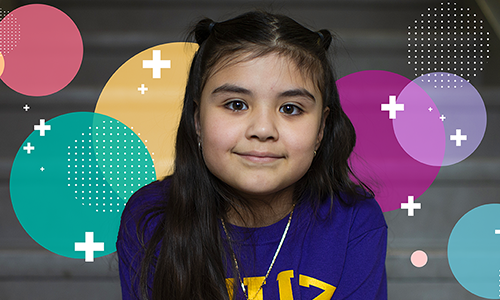 There is consensus among educators that assessments should be purposeful, aligned to instruction, and beneficial to student outcomes. However, there is a vein of debate running through the early childhood field as some professionals voice concerns over the increasing emphasis on assessment of young children, often focusing on standardized tests. In order to navigate these concerns with integrity, it is important to understand some of what is at the root of the issues. Here are four challenges that need to be considered with early childhood assessment.
There is consensus among educators that assessments should be purposeful, aligned to instruction, and beneficial to student outcomes. However, there is a vein of debate running through the early childhood field as some professionals voice concerns over the increasing emphasis on assessment of young children, often focusing on standardized tests. In order to navigate these concerns with integrity, it is important to understand some of what is at the root of the issues. Here are four challenges that need to be considered with early childhood assessment.
1. Accounting for developmental variability
Professionals in early childhood education recognize that typical children develop at different rates in different domains. Because of this, concerns arise about assigning younger children to fixed-form assessments designed to compare students to a proficiency norm, as has been common among state summative assessments in grades 3–8. Typically, the information produced by a fixed-form proficiency-based test is weaker for students well above and below grade-level proficiency marks. Given the greater individual variability that younger children exhibit, some professionals are concerned that some assessments may offer imprecise information for children at lower and higher levels of achievement.
As the Division for Early Childhood notes, “Very young children learn and grow at remarkable and unpredictable rates that are unmatched during other age periods. Because of this, scores from assessments administered to very young children tend to be unstable.” This has two repercussions for those with concerns. First, one-time snapshots are likely to be less meaningful for younger students. Second, professional judgment is a key factor in determining how ready each child is (particularly at and before kindergarten entry) for a certain approach to assessment.
The variability of young children’s abilities relates to two key early childhood topics that carry significance for assessment: developmentally appropriate practice and opportunity to learn. NAEYC defines developmentally appropriate practice as pedagogy and care drawing from three sources of knowledge:
- What we know about child development
- What we know about each individual’s interests, strengths, and weaknesses
- What we know about the children’s cultural and social context
We must be sensitive to a child’s opportunity to learn. For instance, children who have never had adults read books with them in interactive ways have not yet had a chance to develop concepts about books and print. Good assessment practice needs to carefully attend to inferences made about children in cases when they are assessed on concepts they have not had the opportunity to learn.
2. Understanding what gets measured
Another concern in early childhood assessment stems from the possibility of a mismatch between the narrow range of proficiencies that get measured and the breadth of proficiencies that children must develop—and programs must support—in early childhood. What is measured becomes what is taught, some fear; this might leave domains such as social and emotional development and creativity underemphasized in an assessment-driven atmosphere.
A group of early childhood professionals voiced this concern as the Common Core Standards in mathematics and literacy were drafted, and many continue to work toward expanding conversations to include other domains. To early childhood professionals, domains such as social development are central, and failure to assess them introduces a risk of failing to attend to them in instructional settings.
3. Determining how best to assess
Another concern is over the methods of assessment used. The Alliance for Childhood has expressed concern that inappropriate and unreliable standardized tests might be used. Early childhood has some history of multi-method assessment, rich in indirect tools, such as interviews and tools that don’t feel like assessments. Seen from this perspective, the idea of testing may suggest to some a replacement of rich multi-method assessment with a single tool that asks students to set aside their natural behavior or curiosity in order to answer a set of questions devoid of context.
However, as technology becomes more pervasive, it is unclear whether direct assessment can be characterized in this way. In 2012, NAEYC and the Fred Rogers Center sought to address this issue head on by providing seminal guidance on appropriate technology use in early childhood. The Joan Ganz Cooney Center at Sesame Workshop reports that educational app use with young children is massive and growing, for instance, and that the best of these apps make strong use of children’s intuitive moves, curiosity, and need for rich context. Direct assessment data is now available from within educational activities that map less well into a traditional testing schema. Such activities can provide meaningful and objective data about children’s characteristics without compromising developmental appropriateness.
4. Knowing the assessment purpose
A key consideration for any decision-maker is the notion that the use and interpretation of assessments can have both positive and negative effects. No professional wants to see assessment data result in some children losing access to good instructional programming, for instance. Therefore, it is crucial to determine what information is being sought from any assessment before giving it.
Gathering information about students is critical for planning effective instruction, and that usually means giving more than one assessment. So, understanding and communicating the purpose for giving an assessment can help mitigate concerns, such as over-testing and time on task for young children. This can be especially true of kindergarten readiness tests.
The Council of Chief State School Officers outlines purposes and recommendations for a kindergarten assessment program. Our interim assessments MAP® Growth™ K–2 and MAP® Reading Fluency™ are developmentally appropriate assessments that can meet several purposes for assessing young children. MAP Growth K–2 measures achievement in math and reading. MAP Reading Fluency is a universal screening and progress monitoring tool for early reading skills.
In closing
Because accurate data drives higher-quality outcomes for children, we must take the time to consider and navigate these concerns. To allocate limited resources with care, one must know who needs what as well as which efforts actually succeed in meeting each individual child’s needs.






